Hazai/Lukacs:
Anti-Dutch A04
1.Nf3
f5 2.d3
|
 |
|
This opening system known as the Improved
Lisitsin Variation is surprisingly unpleasant
for Black. The authors demonstrate that only the
rarely played move 2…Nc6
is able to equalise. |
Marin: English Opening A10
1.c4 g6 2.e4 e5
 |
|
By playing 2.e4 White wants to avoid the
Grünfeld Defence; the main idea 2…e5 lies in the
continuation 3.Nf3
Bg7
4.d4 exd4 5.Nxd4
Nf6
6.Nc3
0-0 7.Be2
Re8
8.f3 and now 8…c6! allows Black to ain directly
for the advance d7-d5. |
Stohl: Anti-Grünfeld A16
1.Nf3
Nf6 2.c4 g6 3.Nc3 d5 4.cxd5 Nxd5 5.h4
 |
|
If Black takes seriously the intended pawn push
h4-h5, e.g. with 5…h6 or 5…h5, then White makes
a favourable transition to a Grünfeld with 6.e4
followed by d4. According to Stohl, 5…Bg7
6.h5 Nc6!
is preferable. |
Marin: Dutch Defence A89
1.d4 f5 2.g3
Nf6
3.Bg2 g6 4.Nf3 Bg7 5.0-0 0-0 6.c4 d6 7.Nc3 Nc6 8.d5 Ne5
9.Nxe5 dxe5 10.Qb3
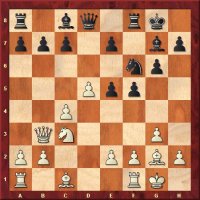 |
|
The line with 10.Qb3
has turned out to be critical for the whole 7…Nc6
Variation. Marin attempts to repair Black’s
plan, basing his suggestion on a piece sacrifice
which has not yet been played. |
Kuzmin: Sicilian Najdorf B90
1.e4 c5 2.Nf3
d6 3.d4 cxd4 4.Nxd4 Nf6 5.Nc3 a6 6.h3
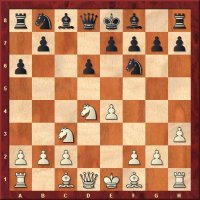 |
|
It is not all that easy for Black to equalise
against the unprepossessing looking move by the
rook pawn. If as White you like to avoid a whole
lot of theory, then you’ll be pleased with
Alexey Kuzmin’s article. |
Langrock: French Defence C03
1.e4 e6 2.d4 d5 3.Nd2
Be7 4.Ngf3 Nf6
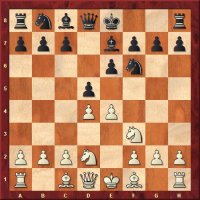 |
|
The author presents the first of a three-part
series on the subject of 3…Be7
against the Tarrasch Variation. What he is
planning is a complete repertoire for Black
based on the bishop move. |
Kritz: Ruy Lopez C67
1.e4 e5 2.Nf3
Nc6 3.Bb5 Nf6 4.0-0 Nxe4 5.d4 Nd6 6.Bxc6 dxc6 7.dxe5 Nf5
8.Qxd8+ Kxd8 9.Nc3 Ke8 10.h3 Be7
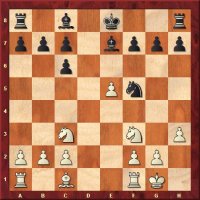 |
|
The wall setup with 9…Ke8
and 10…Be7
is a solid business. By making use of a lot of
his own games, Kritz is able to explain the
basic underlying ideas, which here are more
important than a knowledge of the variations. |
Ftacnik: Slav Defence D11
1.d4 d5 2.c4 c6 3.Nf3
Nf6 4.e3 Bg4 5.h3 Bxf3 6.Qxf3 e6 7.Nc3 Nbd7
 |
|
White plays 4.e3 to protect his c4-pawn, but
accepts the fact that Black can develop his
c8-bishop. But the latter is then chased away at
once and has to be exchanged for a knight.
But despite his bishop pair, White has
surprisingly little. |
Krasenkow: Grünfeld Defence D91
1.d4
Nf6
2.c4 g6 3.Nc3 d5 4.Nf3 Bg7 5.Bg5 Ne4 6.cxd5 Nxg5 7.Nxg5
e6
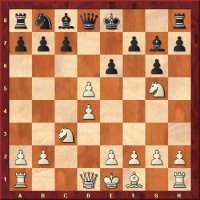 |
|
After 8.Nf3
exd5 there is a Karlsbad structure on the board
and White would like to carry out his queenside
minority attack. But his chances of an opening
advantage are very slight. |
Grivas: Queen's Indian E15
1.d4
Nf6
2.c4 e6 3.Nf3 b6 4.g3 Ba6 5.Qb3
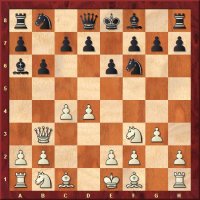 |
|
With this report the author is starting a series
of three, looking at 5.Qb3
from the point of view of White. He intends to
present a repertoire for White against the
Queen’s Indian and the Bogo-Indian. |
Karolyi: Queen's Indian E15
1.d4
Nf6
2.c4 e6 3.Nf3 b6 4.g3 Ba6 5.b3 Bb4+ 6.Bd2 Be7 7.Bg2 c6
8.Bc3 d5 9.Ne5 Nfd7 10.Nxd7 Nxd7 11.Nd2 f5 12.0-0 0-0
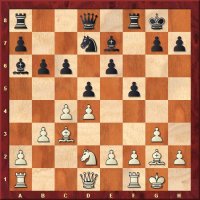 |
|
This Stonewall style setup has also been
employed by the top players. The chances for
equality are better than in comparable positions
from the Dutch Defence. |
Postny: Nimzoindian Defence E25
1.d4
Nf6
2.c4 e6 3.Nc3 Bb4 4.f3 d5 5.a3 Bxc3+ 6.bxc3 c5 7.cxd5
Nxd5 8.dxc5 Qa5 9.e4
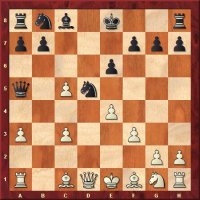 |
|
The evaluation of the position in the diagram is
an important one for the theory of the Sämisch
System. Postny treats three retreats for Black’s
knight an comes to the conclusion that 9…Ne7
is the most flexible. |
Breutigam: King's Indian Defence E61
1.d4
Nf6 2.c4 g6 3.Nc3 Bg7 4.Nf3 d6 5.Bg5 0-0 6.e3
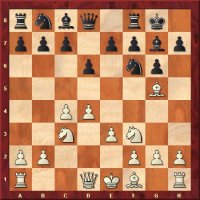 |
|
The Smyslov System is unpleasant for Black,
because the typical play against the d4-square
is not there. Emphasis is laid on the
variations with an early …c5, in which modern
treatment prescribes as the reply: d4 |